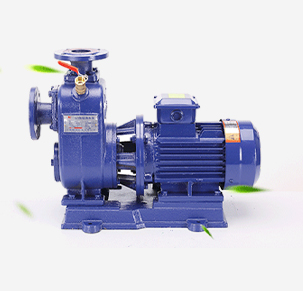Hebrew
- Afrikaans
- Albanian
- Amharic
- Arabic
- Armenian
- Azerbaijani
- Basque
- Belarusian
- Bengali
- Bosnian
- Bulgarian
- Catalan
- Cebuano
- Corsican
- Croatian
- Czech
- Danish
- Dutch
- English
- Esperanto
- Estonian
- Finnish
- French
- Frisian
- Galician
- Georgian
- German
- Greek
- Gujarati
- Haitian Creole
- hausa
- hawaiian
- Hebrew
- Hindi
- Miao
- Hungarian
- Icelandic
- igbo
- Indonesian
- irish
- Italian
- Japanese
- Javanese
- Kannada
- kazakh
- Khmer
- Rwandese
- Korean
- Kurdish
- Kyrgyz
- Lao
- Latin
- Latvian
- Lithuanian
- Luxembourgish
- Macedonian
- Malgashi
- Malay
- Malayalam
- Maltese
- Maori
- Marathi
- Mongolian
- Myanmar
- Nepali
- Norwegian
- Norwegian
- Occitan
- Pashto
- Persian
- Polish
- Portuguese
- Punjabi
- Romanian
- Russian
- Samoan
- Scottish Gaelic
- Serbian
- Sesotho
- Shona
- Sindhi
- Sinhala
- Slovak
- Slovenian
- Somali
- Spanish
- Sundanese
- Swahili
- Swedish
- Tagalog
- Tajik
- Tamil
- Tatar
- Telugu
- Thai
- Turkish
- Turkmen
- Ukrainian
- Urdu
- Uighur
- Uzbek
- Vietnamese
- Welsh
- Bantu
- Yiddish
- Yoruba
- Zulu
Telephone: +86 13120555503
Email: frank@cypump.com
דצמ . 13, 2024 07:35 Back to list
Understanding Septic Pump Systems for Effective Wastewater Management Solutions
Understanding Septic Pump Systems An Essential Guide
Septic pump systems are vital for managing wastewater in areas without centralized sewer systems. These systems play an essential role in ensuring that waste is properly treated and disposed of, protecting public health and the environment. In this article, we will explore how septic pump systems work, their components, maintenance needs, and the importance of proper installation.
What is a Septic Pump System?
A septic pump system consists of a septic tank, a pump, and a drain field, working together to treat and disperse household wastewater. The process begins in the septic tank, where solid waste settles to the bottom, forming sludge. Lighter materials, such as oils and grease, float to the top and create a scum layer. The tank is designed to allow liquids to exit through an outlet pipe into a drain field, where soil naturally filters out remaining contaminants.
However, in situations where gravity alone cannot move the wastewater effectively—such as in low-lying areas—a pump becomes necessary. A septic pump helps transport the effluent from the septic tank to the drain field, ensuring proper flow and preventing backups.
Components of a Septic Pump System
1. Septic Tank This is the central element of the system, where organic materials are broken down by anaerobic bacteria. Tanks vary in size, typically ranging from 750 to 1,500 gallons, depending on the household size. 2. Effluent Pump This pump is activated when the wastewater reaches a certain level in the septic tank. It pumps effluent to the drain field, helping to overcome gravity and ensuring the system operates effectively.
3. Drain Field Also known as a leach field, this area consists of buried trenches filled with gravel or sand. The effluent is distributed here, where it is further treated by the soil.
4. Control Panel Some systems include a control panel that monitors the pump's activity, providing alerts for any issues or failures.
Maintenance of Septic Pump Systems
septic pump systems

Preventive maintenance is crucial for the longevity and efficiency of septic pump systems. Homeowners should adhere to the following guidelines
1. Regular Pumping Septic tanks should be pumped every three to five years, depending on usage, to prevent solids from overflowing into the drain field.
2. Monitor Pump Performance Keep an eye on your control panel for any warning signs. If the pump runs continuously or there are odd noises, it may indicate a malfunction that needs immediate attention.
3. Avoid Non-biodegradable Materials Do not flush items like wipes, sanitary products, or grease down the toilet, as they can clog the system and damage the pump.
4. Watch Water Usage Be mindful of water consumption. Excessive water use can overwhelm the system and lead to backups.
Importance of Proper Installation
The installation of a septic pump system must comply with local regulations and should be conducted by qualified professionals. Poor installation can result in system failures, costly repairs, and environmental hazards, such as groundwater contamination. A well-installed system reduces risks and promotes efficient wastewater treatment.
Conclusion
In conclusion, septic pump systems are essential for managing wastewater in areas without public sewer lines. They consist of several key components, including a septic tank, pump, and drain field, each playing a critical role in the treatment and disposal of effluent. Proper maintenance and installation are necessary to ensure these systems operate effectively and last for years. Homeowners can protect their health, the environment, and their property by understanding the functionality and care of their septic pump systems.
-
High-Efficiency Submersible Effluent Pump for Sewage & Wastewater Solutions
NewsJul.08,2025
-
High Quality CH Warman Slurry Pump Factory - Leading Horizontal Slurry Pump Supplier
NewsJul.08,2025
-
Hot Sale Chemical Circulating Pump – Efficient & Durable Slurry Circulating Pump Solutions
NewsJul.08,2025
-
High-Efficiency Submersible Dredge Pump for Sand & Gravel Durable Dredge Slurry Pumps Solutions
NewsJul.07,2025
-
Wholesale Slurry Pump Impeller Supplier – High-Quality & Efficient Pump Parts for Enhanced Performance
NewsJul.07,2025
-
High-Efficiency Water Submersible Pumps Reliable Water Pump for Potable Water Supply
NewsJul.06,2025










